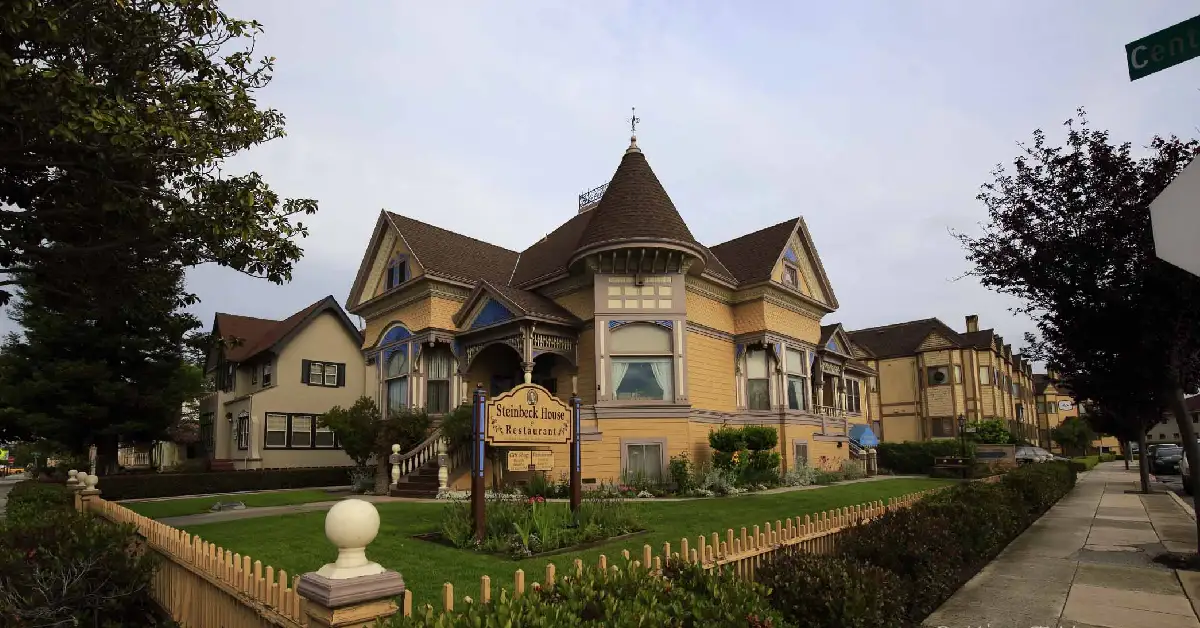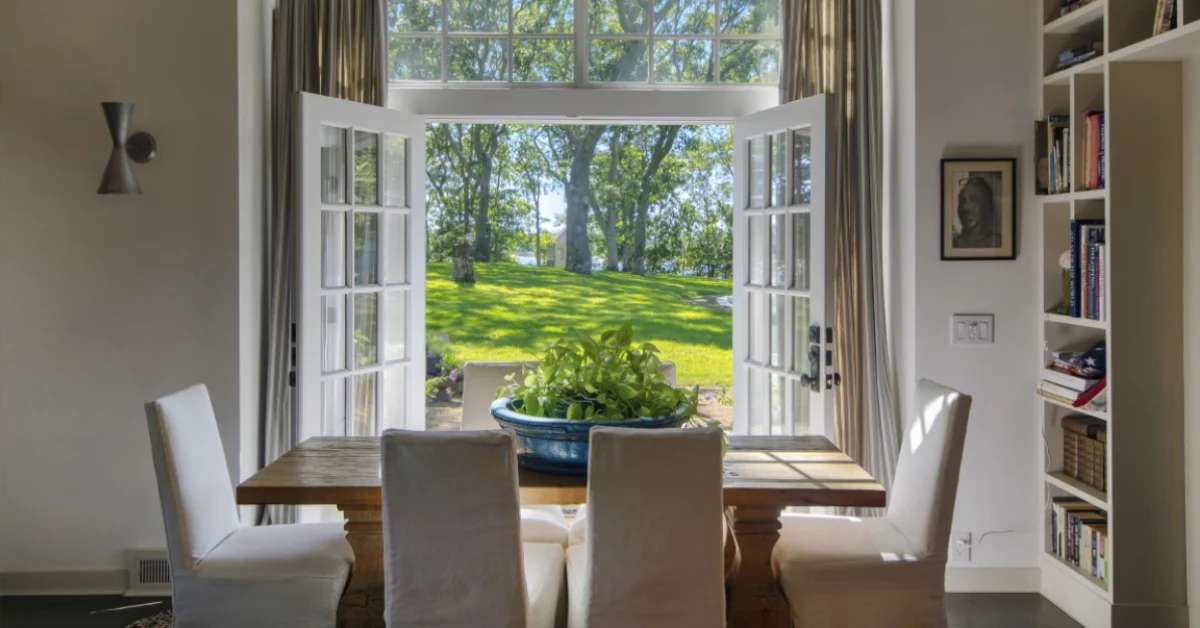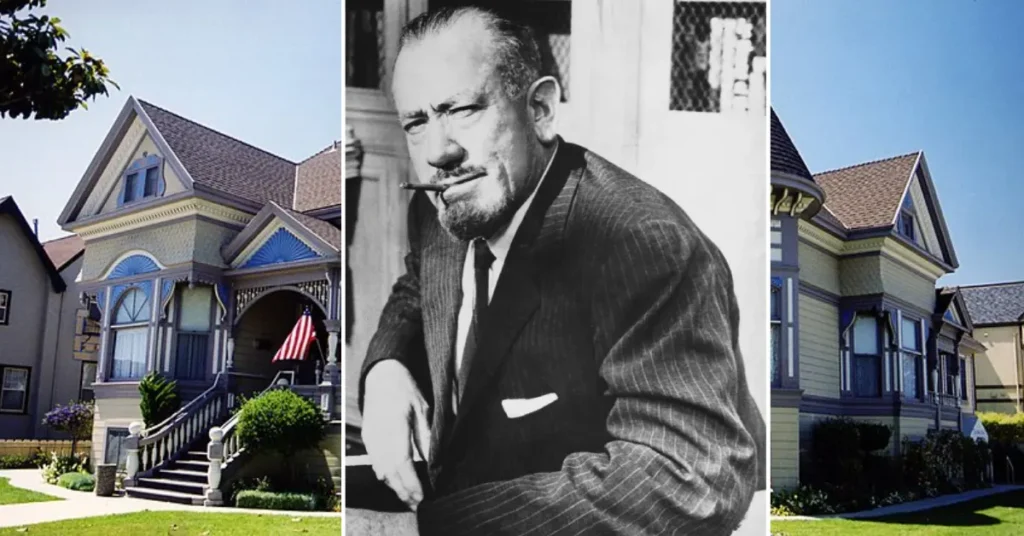The Victorian at 132 Central Avenue in Salinas is more than just an old house. This Queen Anne birthplace of Nobel Prize-winner John Steinbeck witnessed the early life of the mind behind “The Grapes of Wrath” and “Of Mice and Men.” Today, you can eat lunch in the same rooms where young Steinbeck once played and dreamed.
Built in 1897-98 and purchased by the Steinbecks in 1900 when John was barely two, these walls shaped one of America’s literary giants. The National Register of Historic Places recognized this significance in 2000, listing the house for both its Queen Anne architecture and Steinbeck connection.
Love literature, history, or Victorian design? The Steinbeck House takes you back in time.
Here’s a look at its history, unique features, how it was saved, and what to expect when you visit.
Origins & Early Years
The stately Victorian that became home to the Steinbecks was built in 1897-98. Ernest Steinbeck bought it in 1900 when John was two, moving from nearby King City. Ernest worked as Monterey County Treasurer while John’s mother, Olive, a former teacher, raised the family.
John lived here until leaving for Stanford in 1919. His upstairs bedroom looked through turret windows onto the street—a perfect spot for watching Salina’s life unfold. These observations later inspired the characters in his novels.
Most telling about John’s connection to this home was his conversion of a small upstairs room into his first writing space. Here, away from family bustle, he practiced his craft. His letters mention this room as a sanctuary where books and creative thoughts flourished.

The house stayed with the Steinbecks until Olive died in 1934. By then, John had published his first novels, including “Cup of Gold” and “To a God Unknown,” though his greatest works still lay ahead.
Queen Anne Architecture
The Steinbeck House showcases classic Queen Anne Victorian style, popular from the 1880s through the early 1900s. Its standout feature? The rounded corner turret with conical roof makes the house instantly recognizable in Salinas.
Look up and you’ll spot multiple roof lines, decorative wood shingles, ornamental brackets, and a spacious wrap-around porch. This porch, with turned spindles and detailed trim, connected the family to neighborhood life while offering a private retreat.
The original wood siding remains, painted in period colors that highlight architectural details. The uneven front design, common in Queen Anne style, makes the house stand out on Central Avenue.
Step inside to find original woodwork—carved banisters, door frames, and window casings. Heart redwood, a California building staple then, appears throughout, showing off 19th-century craftsmanship. Pocket doors separate formal areas yet allow them to flow together for gatherings.
Several stained glass windows filter colored light inside, creating the warm feel of Victorian homes. The original fireplaces, with decorative tiles and wooden mantels, kept the rooms warm and added charm during Steinbeck’s childhood.
The home’s architectural merit contributed to its National Register listing in 2000, meeting both Criteria B (Steinbeck association) and C (architectural distinction).
Saving a Piece of History
After John Steinbeck died in 1934, the house lwas eft in family ownership. For decades, it changed hands multiple times, gradually losing its literary connection. By the early 1970s, the building needed major repairs to stop further decay.
In 1973, the Valley Guild—eight local women committed to preserving Salinas Valley history—recognized the home’s importance and bought it. Their vision saved a piece of history. The Guild restored the structure to its original condition by researching period details and gathering information about the house during Steinbeck’s childhood.
Careful restoration fixed structural problems while preserving architectural integrity. Paint analysis revealed original color schemes, allowing accurate recreation. Original fixtures and materials were kept where possible; period-appropriate replacements were found when needed.
Due to the Valley Guild’s meticulous restoration efforts, the home was officially listed on the National Register of Historic Places on August 8, 2000, recognizing both its architectural significance and its association with Nobel Prize-winning author John Steinbeck. The recognition highlights both the Steinbeck connection and exemplary Queen Anne design.
Ongoing preservation efforts tackle the challenges of maintaining this 125-year-old structure, ensuring it remains accessible to the public and continues to honor Steinbeck’s legacy. Thanks to the Guild’s foresight, future generations can experience this tangible link to literary history.
Dine Where History Lives
Unlike many historic homes that sit empty as museums, the Steinbeck House buzzes with activity through its restaurant. The Valley Guild transformed the first floor into a lunch spot open Tuesday through Saturday, letting you experience the home while enjoying a meal.
The dining areas occupy the original formal rooms, including the parlor and dining room, where the Steinbeck family gathered. Meals feature fresh, local ingredients—fitting for a region Steinbeck called the “valley of the world” for its abundant agriculture. Many dishes draw inspiration from recipes of Steinbeck’s era, offering flavors reminiscent of Steinbeck’s time.
While eating, you’re surrounded by period furnishings and photographs documenting Steinbeck’s life. Staff members know both the house and author history, sharing stories that bring the property to life.
Beyond meals, guided tours run during summer Sundays and by appointment. These tours reveal deeper insights into Steinbeck’s childhood environment and writing development. Docents point out original features and share family anecdotes.
The “Best Cellar” gift shop in the basement sells Steinbeck books, memorabilia, and local crafts. Proceeds from both the restaurant and the shop fund ongoing preservation, creating a sustainable model for keeping history alive.
Inside the Rooms
Step through the front door and you’ll find spaces largely unchanged from when young Steinbeck lived here. The entrance hall features the original staircase with intricate carvings—the same stairs John climbed countless times.
The formal parlor, now part of the restaurant, keeps its original proportions and details. Period furniture similar to what the Steinbecks would have used creates an authentic Victorian feel. Bay windows flood the room with natural light, just as they did when John was a boy.

The dining room showcases a built-in china cabinet with glass doors—an original home feature. Family meals happened here, where Ernest Steinbeck likely shared county treasurer news while John absorbed conversations that later influenced his writing.
Upstairs, guided tours show John’s bedroom with views from the distinctive turret windows. Though furnishings are reproductions, they match the styles the family would have used. Most significant is the small room John claimed as his writing space—humble beginnings for a literary giant.
Original woodwork survives throughout—door frames, window casings, and decorative moldings. Where possible, original hardware like doorknobs and light fixtures remains. Period wallpapers and paint colors recreate the visual environment of Steinbeck’s youth.
The kitchen, updated for restaurant use, maintains its original location and some historic elements. You can picture Olive Steinbeck preparing meals while young John watched nearby, forming impressions of family life that later appeared in his rich descriptions.
Planning Your Visit
The Steinbeck House welcomes visitors year-round. The restaurant serves lunch Tuesday through Saturday from 11:30 AM to 2:00 PM. Call ahead for reservations, especially on weekends when tables fill quickly.
Summer brings Sunday guided tours from June through August. These 45-minute tours cover both architecture and Steinbeck’s connection to the property.
Find the house at 132 Central Avenue in Salinas, about one mile from Highway 101. Street parking is available nearby.
For literary fans, pair your Steinbeck House with the National Steinbeck Center, a few blocks away at 1 Main Street. The Center houses the most comprehensive collection of Steinbeck archives and exhibits, complementing the personal experience of his childhood home.
Salinas offers several dining options beyond the Steinbeck House if your visit extends past lunch hours. Downtown includes cafes and restaurants within walking distance of both the house and the Center.
Regarding accessibility, the restaurant areas on the first floor accommodate most visitors, but upper floor tours require climbing the original staircase. Staff work to help visitors with varying mobility needs whenever possible.
Why Visit the John Steinbeck House Today?
A visit to the Steinbeck House offers something beyond typical historic home tours. Here, you physically connect with the spaces that shaped one of America’s greatest writers during his formative years.
The house provides context for understanding Steinbeck’s work. His descriptions of Salinas Valley and its people—from “East of Eden” to “The Long Valley”—grew from observations made from these windows and experiences within these walls. Walking where Steinbeck once did creates a link to the origins of his literary vision.
For architecture buffs, the home represents a well-preserved example of Queen Anne Victorian design. Its restoration highlights both the grandeur and intimate details of turn-of-the-century domestic architecture.
The restaurant transforms a static museum visit into a sensory journey. Eating in rooms where the Steinbeck family gathered allows unique immersion in history. Your meal connects you to California’s agricultural heritage—a central theme in Steinbeck’s writing.
Most importantly, the Steinbeck House shows successful historic preservation through community engagement. The Valley Guild transformed an endangered building into a living cultural asset that continues to educate and inspire visitors worldwide.
Whether you come as a Steinbeck reader, architecture enthusiast, food lover, or curious traveler, the John Steinbeck House offers an authentic glimpse into the environment that shaped a literary giant. It’s a chance to step briefly into the world that formed one of America’s greatest storytellers—and perhaps find inspiration of your own.


